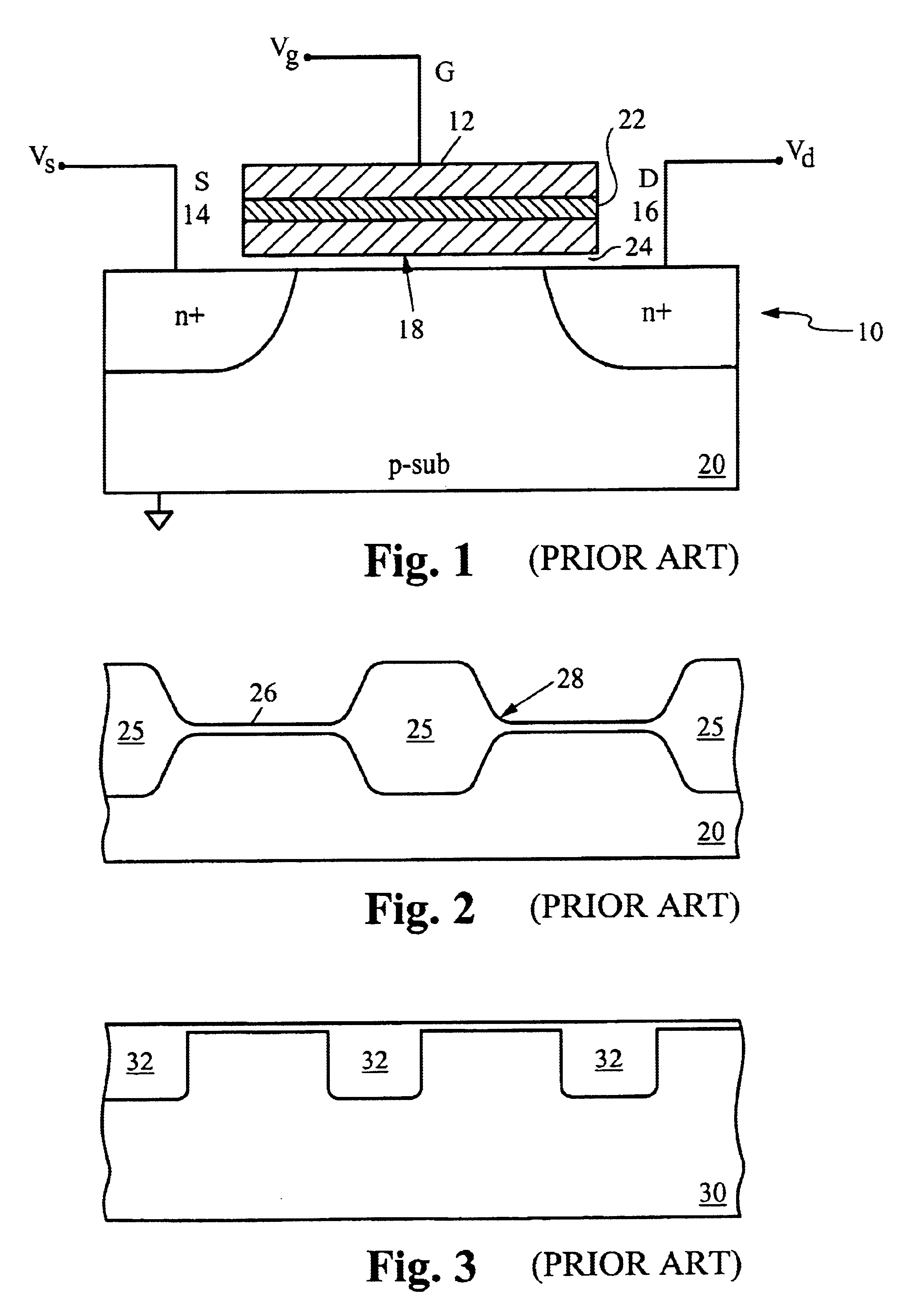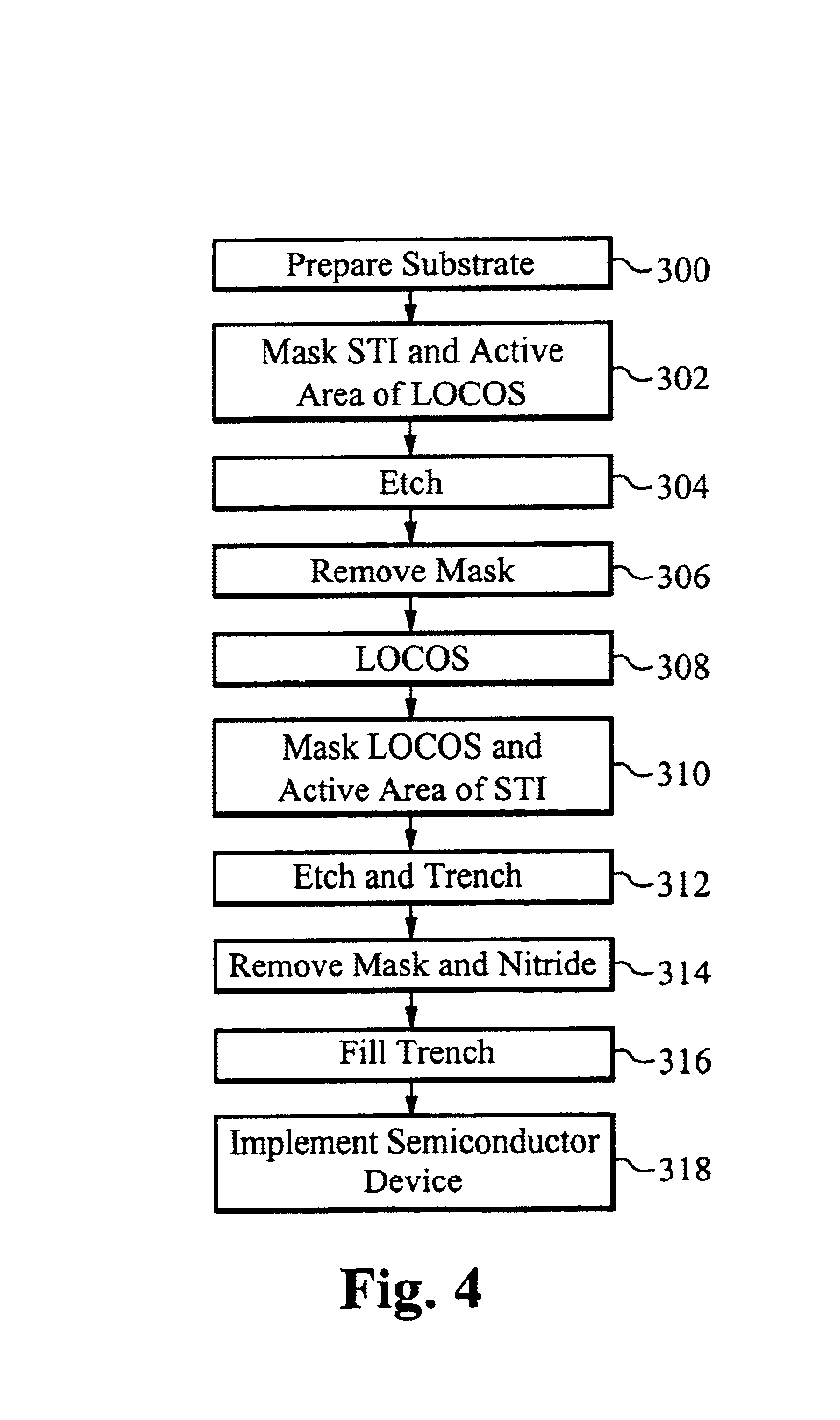Method of and apparatus for integrating flash EPROM and SRAM cells on a common substrate
a technology of flash eprom and sram cells, applied in the direction of electrical apparatus, basic electric elements, semiconductor devices, etc., can solve the problems of ineffective use of active devices or isolation, occupying active areas, and unable to isolate effectively
- Summary
- Abstract
- Description
- Claims
- Application Information
AI Technical Summary
Benefits of technology
Problems solved by technology
Method used
Image
Examples
Embodiment Construction
[0026]A system for and a method of integrating SRAM and flash EPROM cells on a common silicon substrate using appropriate isolation techniques allows the present invention to reduce the package size, increase durability and reliability of the semiconductor device and increase communication speed and accuracy between the SRAM and flash EPROM cells. The present invention allows the STI process and the LOCOS process to be implemented on the same silicon substrate. The STI process is optimized for utilization with the SRAM cells. The STI process allows a greater density of cells to be implemented within an area of the silicon substrate than does the LOCOS process. The LOCOS process is optimized for utilization with the flash EPROM cells. The LOCOS process is capable of effectively isolating areas in which larger voltages are utilized than the STI process. By implementing the STI process in locations on the common silicon substrate where the SRAM cells are utilized and by implementing th...
PUM
 Login to View More
Login to View More Abstract
Description
Claims
Application Information
 Login to View More
Login to View More - R&D
- Intellectual Property
- Life Sciences
- Materials
- Tech Scout
- Unparalleled Data Quality
- Higher Quality Content
- 60% Fewer Hallucinations
Browse by: Latest US Patents, China's latest patents, Technical Efficacy Thesaurus, Application Domain, Technology Topic, Popular Technical Reports.
© 2025 PatSnap. All rights reserved.Legal|Privacy policy|Modern Slavery Act Transparency Statement|Sitemap|About US| Contact US: help@patsnap.com



